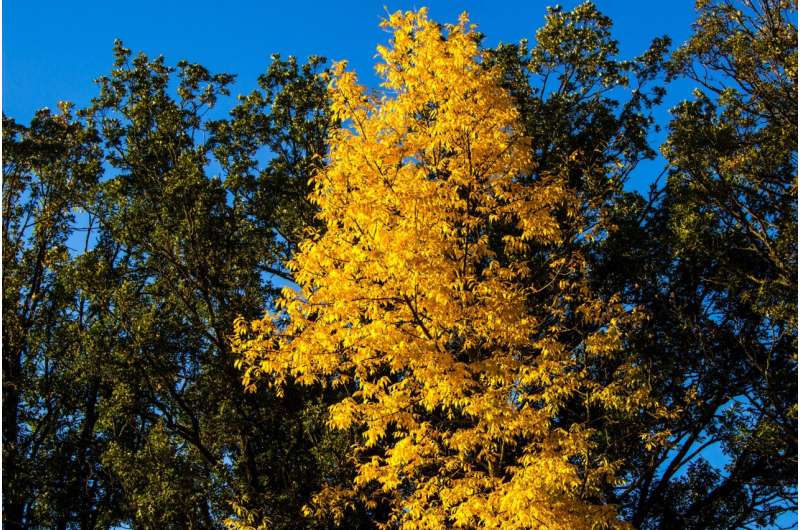Studies find the seeds of a forest's renewal after wildfire, drought

A forest's ability to regenerate after devastating wildfires, droughts or other disturbances depends largely on seed production. Findings from two new studies led by Duke University researchers could boost recovery and replanting after these disasters by providing foresters with new guidance on which trees species produce more seeds and how their productivity can vary from location to location.
"Knowing which species produce more seeds and in which habitats helps us better understand how to manage for seed trees and optimize forest regeneration, especially in areas where seed is limited, like much of the western U.S.," said James S. Clark, Nicholas Distinguished Professor of Environmental Science at Duke, who was corresponding author on both papers.
Clark and his colleagues published their peer-reviewed studies May 2 in Nature Communications and April 23 in Ecology Letters.
The studies come at a time of growing concern about many forests' ability to recover from increasingly frequent and severe droughts and wildfires linked to climate change and increased harvesting to meet growing human demand for wood and other timber products.
On April 25, the Biden Administration announced a new initiative in which the departments of Agriculture and Interior will team with states, tribes, and the private sector to increase federal cone and seed collection and seedling nursery capacity, with the goal of expanding forest replanting programs, especially in Western timberlands burnt by recent wildfires.
"Our findings, which are the first to establish global patterns in tree seed production and quantify how many seeds different species produce under different conditions, could be very useful for these types of forest management and renewal initiatives worldwide," Clark said.
The studies synthesize data on seed production for more than 700 species—from the tropics to subarctic regions—and shed new light on how tree fecundity and seed supply contribute to forest regeneration and biodiversity in different climatic zones, he said. That knowledge is essential to understanding the evolution of forest species and how they respond to losses.
One of the most unexpected findings from the studies is that trees in the wet tropics collectively produce 250 times more seeds than those in dry boreal forests.
The fact that there are more big trees in the wet tropics and they produce, on average, 100 times more seeds than trees of the same size in boreal regions, may explain why species interactions are so intense in tropical forests, Clark said.
Another key finding is that seed production is not constrained by seed size. This dispels a popular assumption that species that produce larger seeds must produce proportionately fewer of them and, as a result, be more susceptible to loss.
"Not true," Clark said. "While trees that have larger seeds do produce fewer than trees with small seeds, we found they nonetheless produce more than previously believed. When you multiply the number of seeds by seed size, you find that the big-seed species are generating more reproductive output overall."
A third intriguing finding is that gymnosperms, or conifers, have lower seed production than angiosperms, or flowering trees, possibly because gymnosperms expend so much energy on making protective cones for their seeds. Knowing this can help guide the replanting and management of many of the Western forests scotched by recent wildfires, Clark said.
It also may yield a clue to help solve Darwin's famous "abominable mystery" of why so many species of flowering plants developed during the Cretaceous Period, 145.5 million to 65.5 million years ago, while most other species (other than dinosaurs) lagged.
"This is the first time we've had evidence that links seed production directly to species fitness," Clark said. "It may be that high seed production is what made flowering plants fit enough to flourish and evolve under the trying conditions of the Cretaceous, just as it does today."
More information: Tong Qiu et al, Limits to reproduction and seed size-number trade-offs that shape forest dominance and future recovery, Nature Communications (2022). DOI: 10.1038/s41467-022-30037-9
Valentin Journé et al, Globally, tree fecundity exceeds productivity gradients, Ecology Letters (2022). DOI: 10.1111/ele.14012
Journal information: Nature Communications , Ecology Letters
Provided by Duke University



















